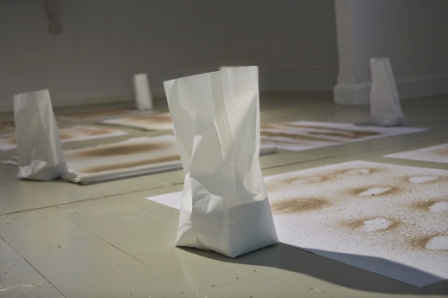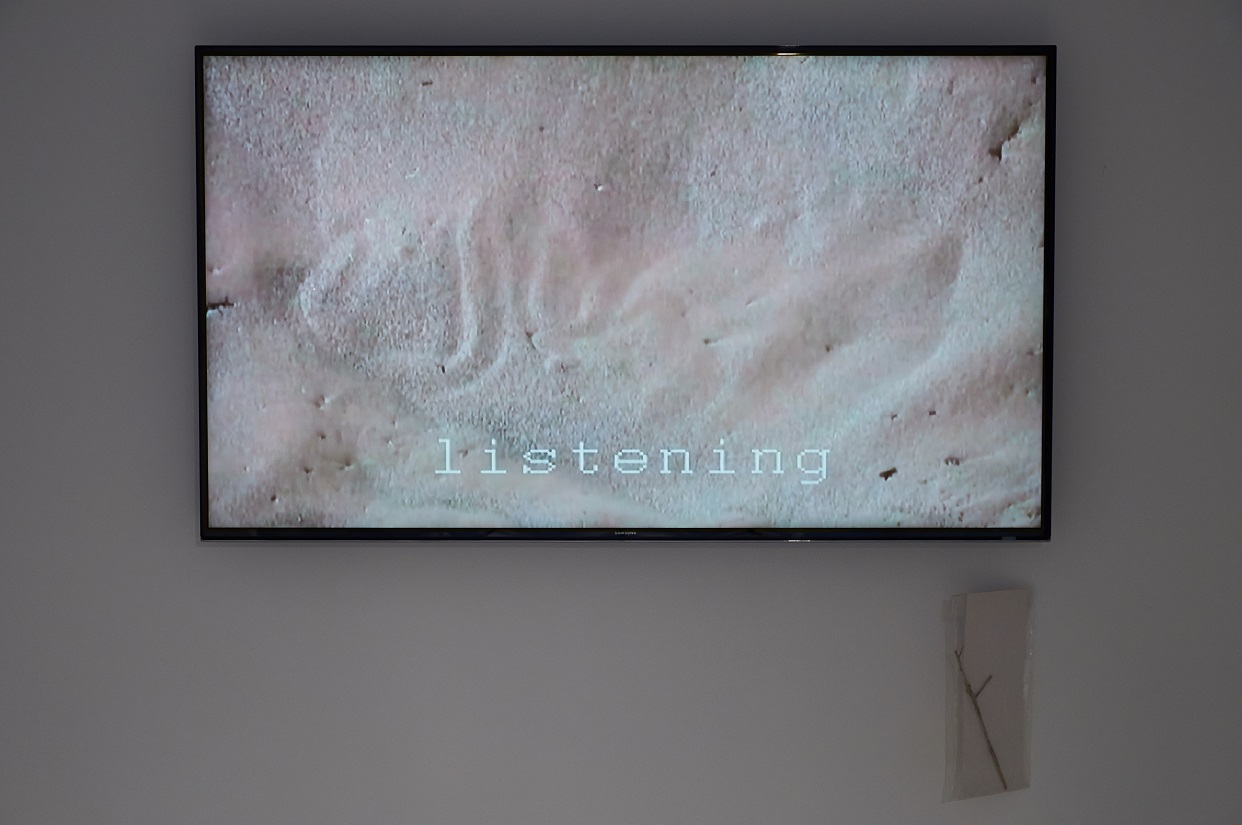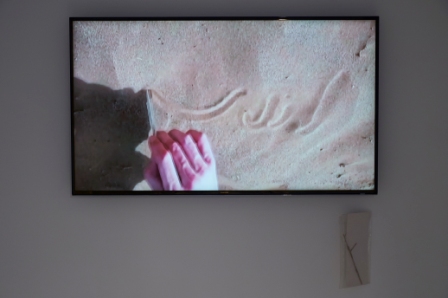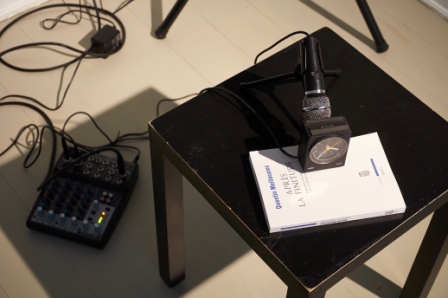Center for Klangkunst
“QUARTZ”
-
Peter Ablinger

Quartz is the mineral of which sand for the most part consists. In the next room we encounter a quartz clock whose ticking is amplified by a microphone. One property of the mineral quartz is that the duration of its electric oscillations precisely match the duration of our seconds, which is why it is suitable as the timekeeper in the quartz clock. But if we listen very carefully, we hear that not every second sounds the same, and that every minute there are cycles to be discovered which recur, but never exactly the same way. A book by the philosopher Quentin Meillassoux, Après la finitude, serves as the base of the clock, as if hearing is being supporting by thinking.
Twelve large sheets of paper spread out on the floor, strewn with (Danish) sand, take up almost the entire third room. This work is part of his Sounds on Paper [Klänge auf Papier] series and centers on the phenomenon of the musical score and of sound as idea: a score can be read by a trained musician, which means that he or she imagines the music notated there. Sounds on Paper is a kind of score for those who can’t read notes: a sand notation with distinct edges can only come about when the sand has been poured from a slight distance above (very soft); an aura around the marking indicates a pour from a middle height (somewhat louder); an irregular empty center only comes about from a relatively high pouring level, where the energy of the dropping sand immediately whisks the impact’s center point away again (distinctly audible). In this way, the image (the observing/reading/thinking) appears to be linked to the sound (hearing). The work will gain an additional dimension at the vernissage, when Peter Ablinger will work on and complete the piece live. In a niche in the space we find a small monitor and two pairs of headphones. On the monitor we meet the quartz clock we have just seen, flanked by musical notes whose image renews synchronously with the seconds’ progress.
In the headphones we hear the ticking of the quartz clock together with its spectral analysis, which renders that very same – surprisingly varied – ticking as music.
A video screen forms the concluding aspect at the end of the space; we have heard its sound the whole time, but only in coming closer do we identify it as a sandstorm.
Peter Ablinger uses a small branch to write two alternating words in Farsi in the Iranian desert sand, his letters immediately erased by the wind: “thinking” and “hearing”.
Peter Ablinger decribes the concept “thinking/hearing” as: “almost a mantra or prayer. One can do it oneself and become aware of the difference between thinking and hearing, the differing ways of being-in-the-world according to whether we – as during 99% of the day – are caught up in our thoughts and not hearing the world around us, or whether we – in listening – not only discover ourselves within it but also, to a certain extent, re-discover ourselves.” Another text states: “hearing means ‘being here’; thinking means ‘being elsewhere’.”
The volume of seven billion grains of sand, and everything in this exhibition that seems to evoke the qualities or the parameters of sand – drawing, time, trickling (shifting), wind, sound and the idea of sound – become part of a dense web of relationships and a meditation on fleetingness and the uncountable, presence and impossibility.
Listen to kunsten.nu’ podcast on Ablinger and Führer:https://soundcloud.com/kunsten-nu/lydkunst-6-it-is-what-is-is-peter-ablinger-og-andreas-fuhrer-pa-kunsthal-44-moen
Sunday 21.6.2015 4 pm
WITH AND WITHOUT
PETER ABLINGER & UTE WASSERMAN
Fanefjord Church



